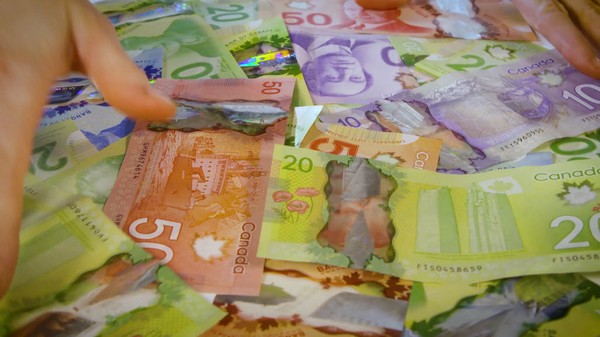During meetings held on February 12th and 21st interested stakeholders heard how monies from the sale for Eesti Maja, as well as funding from benefactors, could be advantaged by charitable donations and deductions. Whether the final sum is $12 or as high as $18 mil, the 4 Orgs want “the proceeds of an Estonian House sale to be directed to the project with minimal tax consequences.” (Schedule A from the Special Meeting of The Estonian House Toronto Limited on April 25, 2017) As the project team approaches the end of their due diligence, they continue “
confirming sources and uses of funds and resolving the legal issues including the over-arching tax-efficient legal structure and governance for the Centre.” (From Estonian Centre project Feb.21 community meeting
https://docs.wixstatic.com/ugd...) Write-offs aside, the governance structure of a charitable organization will eliminate the type of accountability mechanisms shareholders and other stakeholders can exercise over directors and advisory boards.
Since tax strategy will trump multi-level governance, the mechanics of transferring funds with “minimal tax consequences” could be particularly interesting. If Eesti Maja is sold, Estonian House Limited (EHL) will have a lot of liquidity. In most situations shareholders might benefit from a dividend. But that won’t happen in this case because the funds already have an alternate purpose. When funds are “gifted” or donated to the Madison Project, who or what will get the greatest taxable benefit. One option could have been to give a sizable dividend to individual shareholders then have shareholders defer any tax implications by giving personal donations to Madison. Shareholders would have some autonomy over the direction of their funds. Should shareholders be checking the mail for tax receipts in 2019/20? Most likely not. The preferred path seems to be that EHL (the corporation) will donate funds to the Madison Project and use that tax benefit to defer capital gains. There’s nothing to trickle down to shareholders. Has this tax planning concept been resolved? Not exactly. But it should be a question brought to shareholders since the strategy has tax implications for everyone involved.
What if shareholders donated their shares to a charity the same way someone might gift a house or a work of art? What would the value of that donation be?
Before last April most shareholders were settled on an understanding that the value of Eesti Maja shares had not appreciated because few ever envisioned the House being sold or the corporation dissolving. The $50.00 face value used during most fundraising efforts was the price most were content with. But if EHL’s central asset is sold, and the corporation has no other asset in the future, should shareholder expectations change?
The credit union’s support for the $150,000 installation of the elevator was precedent setting. A simple formula was applied which took the Estonian House value divided by number of shares to determine an estimated face value per share. Estonian House had an estimated worth of $2 million. There were approximately 4000 EHL shares outstanding. ($2 million ÷ 4000 = $500 share value) The elevator construction cost was then divided by the estimated face value per share to calculate the number of shares that would be sold. ($150,000 ÷ $500 = 300) At the end, 300 shares were sold for a fair price and EHL shareholder value was not diluted. If Eesti Maja is sold and funds are transferred to Madison, EHL shareholders might favour getting a donation receipt for present day value. Since 958 Broadview could raise more than $12 million, a donation receipt for $500 per share might be a little low.
As James Daw revealed in a 2007 Toronto Star article, the value of some charitable donations can be in the eye of the beholder. (See
https://www.thestar.com/opinio...) Recall that Daw described how charitable “donations” sheltered corporate revenue that would have otherwise been taxable. In fact, a detailed audit by the Canadian Revenue Agency (CRA) discovered some extraordinary practices by The Millennium Charitable Foundation. The CRA outlined how a collection of 693 prints (works of art) was acquired by a private collector in 2002 for $1,450,000US. The collection was divided and one package of 242 prints, or 35% of the collection, was donated to Millennium. In correspondence to the organization the CRA noted:
“
As the Works of Art were traded for property of equal value, i.e. 242 of the Henry Moore prints, the true fair market value of all of the Works of Art donated to the Charity is no greater than $656,000 (35% x $1,450,000 US x 1.2924 [12/31/03 exchange rate]). However, the donation receipts issued for works of art amounted to $16,856,516 (as reported), an overstatement of $16,200,516.” (Page 8)
Findings from the CRA’s audit of The Millennium Charitable Foundation are available here.When $656,000 turns into $16,856,516 the first thing that might come to mind is Bitcoin climbing 25x in value, not artwork. All donors to any charity should heed the outcome of this CRA audit because, in the end, Millennium’s charitable status was revoked. On March 14th any EHL shareholders attending the information meeting may want to pay particular attention to details outlining how monies from the sale of Eesti Maja may be transferred to the proposed Estonian Centre (Madison) Project.
Allan Meiusi
EWR Contributor
Related:
Toronto Eesti Maja tulevikMadison Project “Due Diligence” Part 1Madison Project “Due Diligence” Part 2 Madison Project “Due Diligence” Part 3 – School Season NeighboursPart 4 - "Déjà vu all over again"Part 5 – "Cash out, but will it cash in?” Part 6 – "11 Madison: Check the box.”Part 7 – "Tired, but still solid.”Part 8 - "Whose House Is It Anyway?"Part 9 - "Double Duty"Part 10 – "Actual versus Perceived"Part 11 - "Lament For A House"
